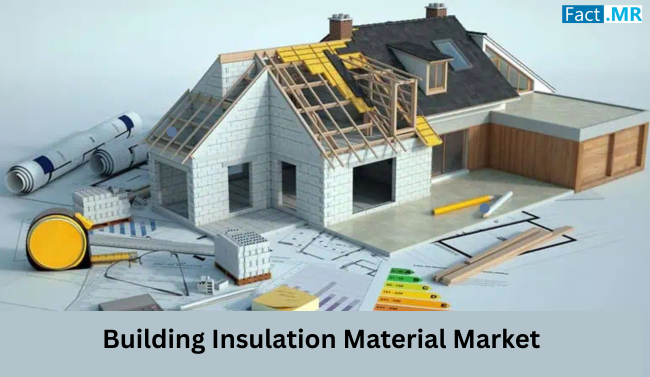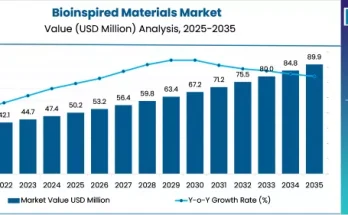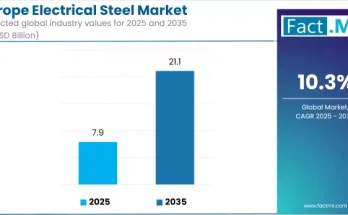As the global construction industry increasingly emphasizes energy efficiency and sustainability, the building insulation material market is undergoing a transformative expansion. With mounting regulatory pressure, evolving climate goals, and heightened consumer awareness, the demand for high-performance insulation materials is surging across residential, commercial, and industrial sectors. The next decade is expected to witness significant innovation and market expansion, driven by a collective shift toward greener infrastructure.
Building insulation materials play a critical role in improving thermal efficiency, reducing energy consumption, and ensuring occupant comfort. From new construction projects to retrofitting old buildings, insulation solutions are becoming indispensable in meeting energy codes and carbon reduction targets.
Market Overview
Building insulation materials are engineered to slow the transfer of heat, thereby maintaining consistent indoor temperatures and minimizing the need for mechanical heating or cooling systems. The market comprises a wide array of insulation types, including mineral wool, fiberglass, expanded polystyrene (EPS), extruded polystyrene (XPS), polyurethane foam, and natural or bio-based materials.
These materials are not only selected for their thermal performance but also for factors like moisture resistance, soundproofing ability, fire safety, ease of installation, and long-term durability. As demand for net-zero energy buildings rises, manufacturers are innovating insulation products that align with green building certifications and sustainable design principles.
Key Drivers of Growth
Several core factors are accelerating the demand for advanced building insulation materials:
- Regulatory Support for Energy Efficiency: Governments worldwide are introducing stringent building codes and green certification programs to enforce energy-efficient construction practices. These regulations often mandate the use of thermal insulation in both residential and commercial structures.
- Environmental Sustainability Goals: With global emissions reduction targets in focus, insulation materials are increasingly viewed as low-hanging fruit in achieving energy conservation. Improved insulation can substantially reduce heating and cooling loads, thereby cutting down greenhouse gas emissions.
- Rising Construction Activities: Urbanization and population growth are spurring new residential and commercial developments, especially in emerging economies. These developments demand cost-effective, thermally efficient, and eco-friendly insulation materials.
- Retrofitting Existing Structures: The refurbishment of aging building stock presents a lucrative opportunity. Retrofitting insulation not only enhances energy efficiency but also boosts property value and indoor comfort levels.
- Technological Advancements: Innovations in material science have led to the development of insulation products with improved R-values, thinner profiles, and lower environmental footprints. Nanotechnology, aerogels, and vacuum insulation panels are examples of next-gen solutions reshaping the market.
Regional Insights
- North America continues to lead the global building insulation material market, largely due to early regulatory adoption, well-established construction standards, and a growing focus on sustainable building practices. The region also benefits from robust demand in residential retrofits and commercial green buildings.
- Europe is a frontrunner in implementing energy efficiency directives, including net-zero energy targets and building renovation initiatives. The region’s emphasis on sustainable urban development and circular economy principles is driving demand for recyclable and bio-based insulation materials.
- Asia-Pacific is emerging as a high-growth market, backed by rapid infrastructure development, smart city projects, and increasing climate consciousness. Countries like China, India, Japan, and South Korea are investing heavily in building energy performance, thereby creating substantial demand for advanced insulation materials.
- These regions are gaining traction in the insulation materials landscape due to climate-specific needs—thermal insulation in temperate zones and moisture-resistant materials in humid regions. Moreover, energy savings are becoming a key consideration for public and private sector construction projects.
Key Trends and Forecast
Several trends are shaping the future of the building insulation material market:
Shift Toward Eco-Friendly Materials
There is growing consumer and regulatory pressure to reduce the environmental impact of construction materials. This is fueling demand for insulation made from natural fibers, recycled content, and bio-based polymers. Hemp, cotton, wool, and cellulose insulation are gaining popularity in green building projects.
Increased Use of Composite and Hybrid Insulation
Manufacturers are developing composite insulation products that combine the strengths of various materials—such as thermal resistance, soundproofing, and moisture control. These hybrid materials offer multifunctional benefits in compact forms, suitable for modern architecture.
Digitalization and Smart Construction Integration
Building Information Modeling (BIM), digital twins, and smart sensors are being integrated into insulation planning. These technologies allow better prediction of energy performance and enable more accurate installation and lifecycle assessment of insulation systems.
Focus on Fire Safety and Health Standards
New regulations are being introduced to ensure that insulation materials meet stringent fire resistance and indoor air quality standards. Non-toxic, low-emission materials are increasingly favored in residential and commercial applications.
Growth in Pre-Insulated Building Panels
The adoption of modular construction and prefabricated building panels is expanding. These pre-insulated panels accelerate construction timelines and ensure consistent thermal performance, making them ideal for large-scale infrastructure projects.
Applications and End-Use Outlook
Building insulation materials are utilized across various sectors and construction stages:
- Residential Sector: Insulation is applied in walls, attics, roofs, and basements to ensure thermal comfort, lower utility bills, and soundproofing. Retrofits of older homes are a particularly strong area of growth.
- Commercial Buildings: Offices, retail spaces, and institutional buildings require sophisticated insulation systems to meet energy codes and provide optimal working environments.
- Industrial Facilities: Warehouses, factories, and cold storage units use insulation to control internal temperatures, reduce energy consumption, and protect sensitive equipment.
- Public Infrastructure: Government-funded projects, such as hospitals, schools, and transportation terminals, are incorporating high-performance insulation to meet long-term operational efficiency goals.
Competitive Landscape
The global building insulation material market is characterized by the presence of several established players, along with emerging innovators. Key manufacturers are focused on:
- Expanding product portfolios to include low-carbon, recyclable, and high-performance materials.
- Investing in R&D to improve insulation effectiveness, fire resistance, and material longevity.
- Engaging in strategic mergers, acquisitions, and partnerships to enhance regional presence and technological capabilities.
- Leveraging automation and digital manufacturing to streamline production and reduce costs.
The competitive edge lies in offering solutions that balance performance, sustainability, and affordability. Companies that can innovate in line with evolving building codes and consumer expectations are best positioned for long-term success.
Challenges and Considerations
Despite its promising outlook, the building insulation material market faces several challenges:
- Price Sensitivity: High-performance insulation materials can carry a premium cost, which may deter adoption in price-sensitive markets.
- Installation Complexity: Some advanced insulation solutions require skilled labor and specialized installation techniques, potentially adding to project timelines and budgets.
- Raw Material Availability: Dependence on petrochemical-derived inputs or natural fibers subject to agricultural fluctuations can impact supply stability.
- Recycling and Disposal: End-of-life management of insulation waste remains a concern, particularly for materials that are difficult to recycle or may release harmful substances during degradation.
Overcoming these challenges will require coordinated efforts across the value chain—from raw material suppliers to regulators and end-users.
Conclusion
The building insulation material market is entering a pivotal phase, driven by the global shift toward sustainable and energy-efficient construction. As governments tighten regulations and industries strive for net-zero targets, insulation materials will play a central role in shaping the future of building performance.
From innovations in eco-friendly products to advances in digital integration, the sector is rich with opportunities for growth and transformation. For stakeholders across the construction ecosystem, staying informed through detailed market analyses is crucial for strategic decision-making and competitive advantage.



